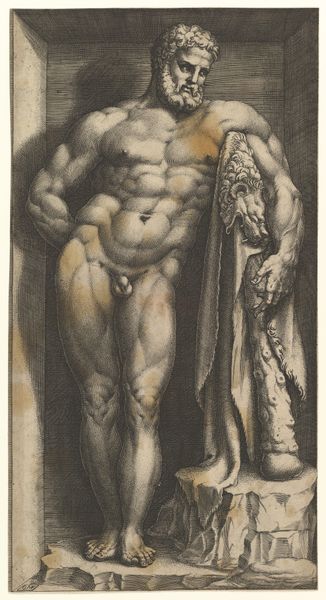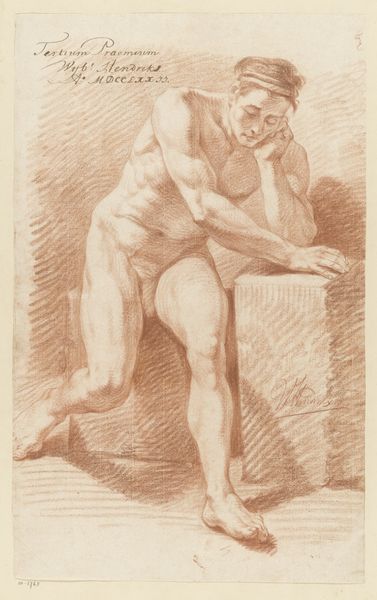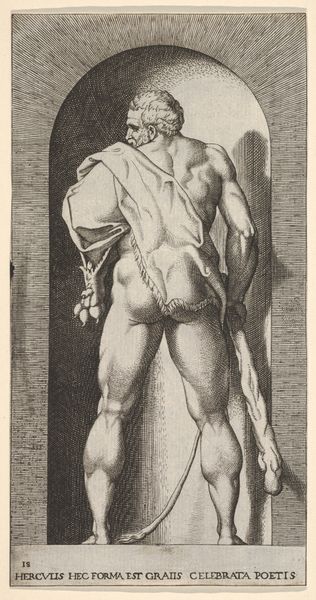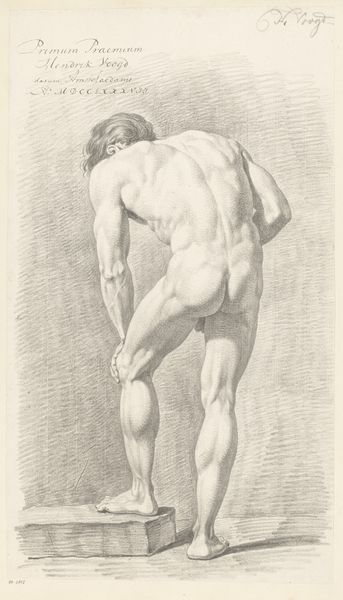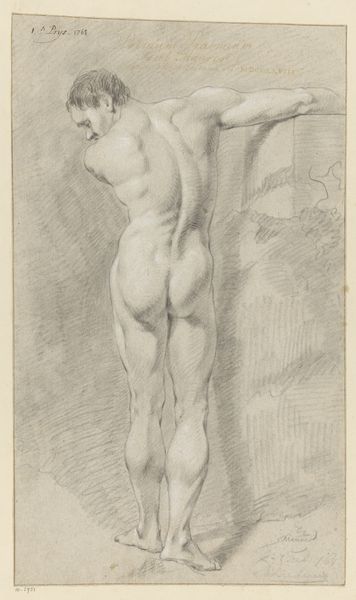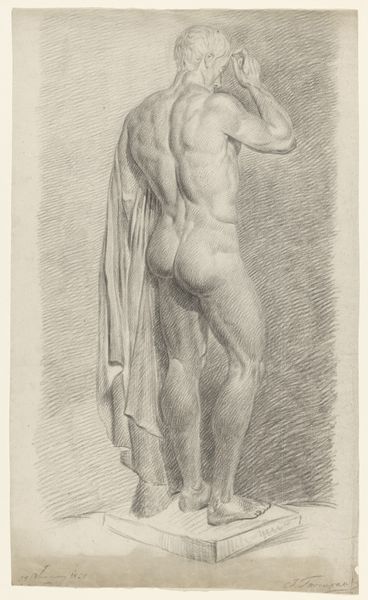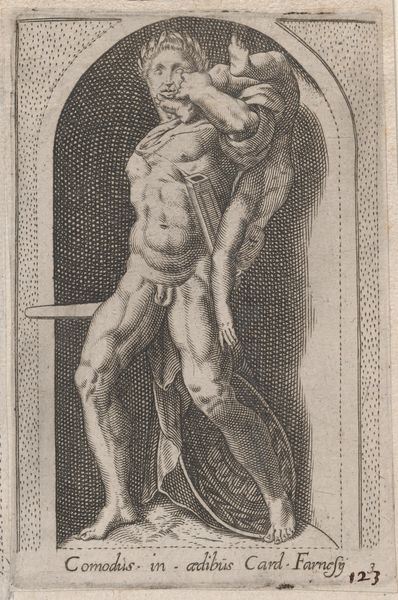
Plate 1: Saturn in a niche devouring his son, standing before a scythe, from "Mythological Gods and Goddesses" 1526
0:00
0:00
drawing, carving, print, engraving
#
drawing
#
carving
# print
#
caricature
#
mannerism
#
figuration
#
line
#
history-painting
#
italian-renaissance
#
nude
#
engraving
Dimensions: Sheet: 8 5/16 × 4 7/16 in. (21.1 × 11.2 cm)
Copyright: Public Domain
Editor: So, this is Giovanni Jacopo Caraglio's 1526 engraving, "Saturn in a niche devouring his son," part of the "Mythological Gods and Goddesses" series. It's pretty stark, and violent, just looking at the textures created by the engraving. What jumps out at you about it? Curator: Well, immediately, the act of engraving itself is paramount here. The labor involved in meticulously carving those lines into the metal plate! Consider the socio-economic conditions allowing for such a specialized craft. This isn’t just about artistic vision, but about the physical and economic means of production available at the time. What about you? Does the choice of printmaking influence your read? Editor: Absolutely! It makes me think about how accessible the image would be, compared to a painting. So how the message is available to people beyond, you know, a wealthy elite. And the choice of subject, this brutal myth... Curator: Precisely! Think about the consumption of classical imagery in the Renaissance. Why this particular myth? What anxieties might it reflect regarding power, inheritance, or even the changing social order? The lines almost seem to constrain Saturn, forcing his mythos into a new, consumable commodity. Editor: So, it's not just about the artistic skill, but also about how the print is circulated, and the impact it has on society. It makes me think about the commercial aspects as well. Were prints like these a luxury item? Or were they mass-produced? Curator: An astute observation! They fall somewhere in between. While requiring skilled labor, prints allowed for wider dissemination than unique paintings. Consider the cost of materials - the metal plate, the ink, the paper - all playing into the final price and target audience. It also emphasizes a skilled labor workforce. The creation and commerce that drives the need for specialized skills and craftsmen, making them central to understanding Renaissance art and economy. Editor: That's fascinating! It makes you think about the artwork being embedded in social systems that enable it. I definitely appreciate it a bit more, knowing that all that careful labor went into something accessible! Curator: Exactly! Seeing art as a product of both artistic skill and the conditions of its making can truly deepen our understanding and appreciation of art.
Comments
No comments
Be the first to comment and join the conversation on the ultimate creative platform.

